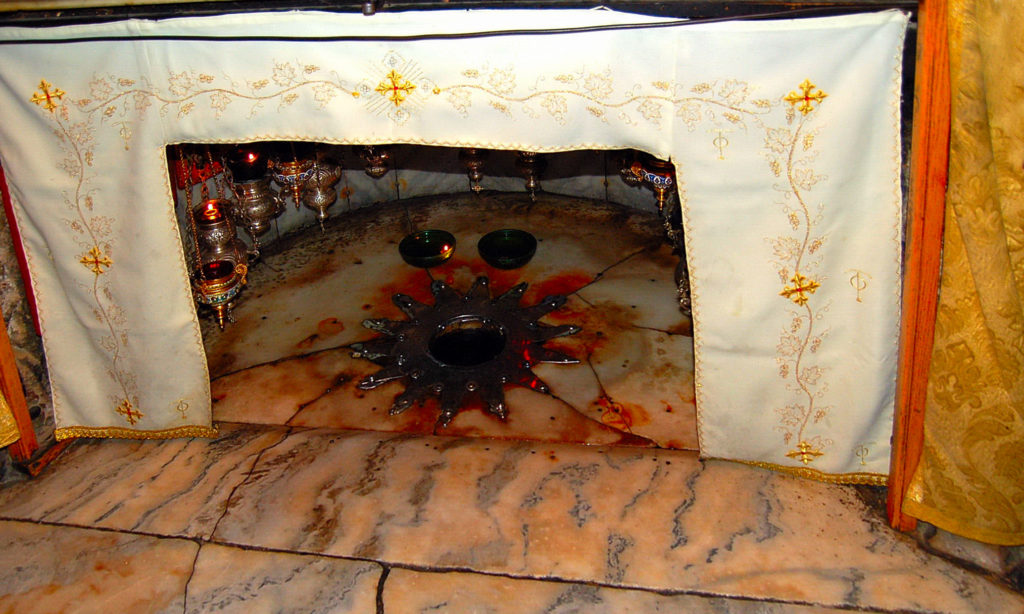
The Grotto of the Nativity in Bethlehem, Palestinian Territories, is revered by Christians as marking the very spot of Jesus’ birth. Whether it does is a matter of faith.
The Bible recites that Jesus was born in Bethlehem, a village about six miles south of Jerusalem, but says nothing about the actual site. The Gospel of Luke provided a clue for early Christians in saying that Mary laid her newborn in a feed trough. In 248 A.D., Origen of Alexandria, a Christian theologian, repeated rumors that Jesus had been born in a cave, a rational deduction because people in Bethlehem at the time often kept their animals in caves beneath their homes. After Emperor Constantine declared in 313 that Christianity was an acceptable religion in the Roman Empire, he sent his mother Helena to the Holy Land to identify sites important in the life of Jesus. She reported that Jesus had been born in a Bethlehem cave beneath a Roman temple to Adonis, the lover of Venus. Constantine demolished the temple and replaced it with a church, dedicated in 339. After the original church was destroyed during a revolt by Jews and Samaritans against the Byzantine Empire, Emperor Justinian rebuilt the church in essentially its current form in 565. The cave beneath the Church of the Nativity became known as the Grotto of the Nativity.
In 1717, Roman Catholics placed a 14-point silver star in the Grotto over what they claimed was the flat stone where Mary had lain as Jesus was delivered. In 1847, the star was stolen, allegedly by Greek Orthodox. The star was returned under government orders in 1853 and Greek Orthodox were given control of the portion of the Grotto that included it. Roman Catholics were given control of another portion of the cave, said to be where the manger was located.
Comments are closed.